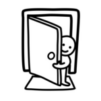3 Things to Build Connection You Can Start Doing Today
How can I know what basics we have going strong? What do I need to work on? (Part 3 of 3 in a series on Foundations of Language Development by Elaine Thiessen. Ideas in this section by Alyssa Johnson)

We hope by now you’re saying: “Second language learning just won’t happen unless my child has the basics of relationship and communication going strong.”
No matter what you’re hoping to help your child learn, it will always come back to relational connection because you can’t force their learning. A good quote from an internet mom goes: “Learning can only happen if a child is interested. If they’re not interested, it’s like throwing marshmallows at their head and calling it eating.”
How can we foster their interest? By inviting their attention to it.
How do we get and keep their attention? By connecting with them (voice, eyes, touch), helping them see we are on their side, then drawing them warmly, playfully into learning with us.
Yes, you say.
Seems so simple, you say.
But every mom can think of a time they wanted their child to learn or pay attention to something, and just dragged the child away from something else the child WAS interested in, then attempted to tell the child what to learn.
Meanwhile the child is squirming, messing around, or beginning a tantrum in response.
“What went wrong? Failure to connect with the child before the learning begins.”
Here’s a few tips for building connection you can do today:
- Collect their attention. Don’t call your child over from across the house. The thing you want them to do is worth doing, isn’t it? So convey that message with the way you interact. Go near to your child. Say their name in a normal volume, touch their shoulder or hand. You’re “collecting” their focus, body, and eye contact.
- Connect to them. Smile and exchange a few words about what they are doing. They must perceive that what matters to them matters to you. Show you delight in them. True warmth. Get on the same side together before transitioning the activity to your agenda. Hold their eye contact, give them affection.
- Communicate. Deliver your plan or instruction to them. Let them respond. Explain it simply, don’t over-explain what you want them to do. Tell them you will do it together. Stay by their side and dive into the task with them. If possible, let the child sit on your lap. When it is finished, encourage them with something like “I liked having your full attention!” then tell them they’re all done. You did it!
How did it go? If you repeat this process for the next 50 instructions/commands you give your child, you will be well on your way to a great habit of regular relational connection with your child! Your relationship will be more joyful, and you will have a full well of positive emotion from which to “draw” from for your next interaction with your child.
Note on DELIGHT: You can’t shortcut this.
Truly, warmly delighting in your child is not and should not be just a means to your end. It can’t be counterfeited, because kids can easily tell when adults are being fake.
Turn this around on yourself: how do you feel when someone interacts with you then suddenly shifts to an underlying meeting request? It’s pure and sincere manipulation.
“When it comes to communicating with our kids, failing to show true delight is how we shoot ourselves in the foot.”
This all should “click” in regards to your second language learning with your child. Can you bring all the elements of voice, eye-contact, delight, affection and playfulness into your next planned language learning session?
If you’ve found a relational connecting point with your kids that aids language learning, share it in the comments section!
-Alyssa Johnson
Why are we talking about this? Click here to read Part 1 and Part 2 of this series on Foundations of Language Development.
